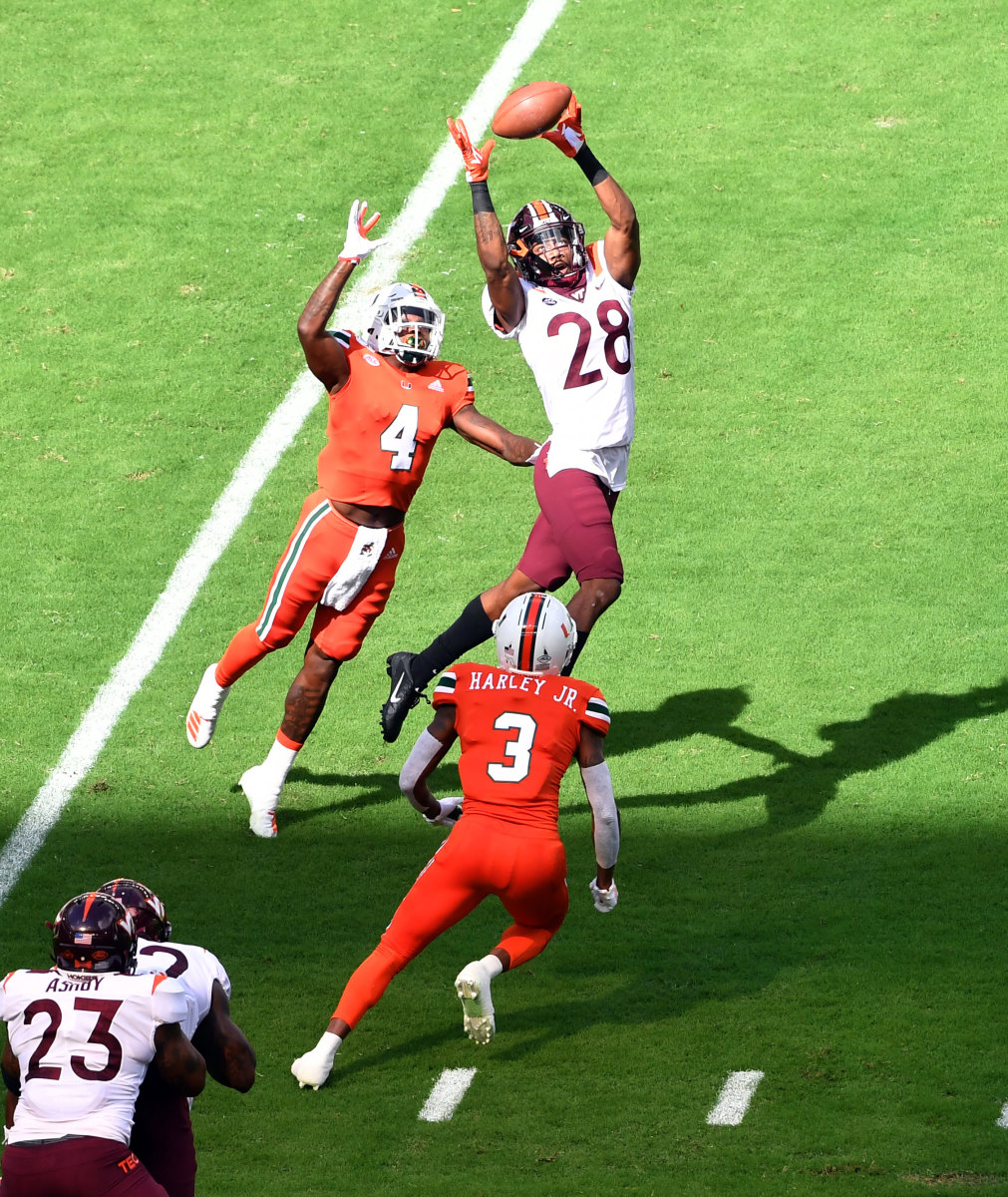How Will the Hokies' Defense Look Under Justin Hamilton?

When Justin Hamilton was named the Hokies’ new defensive signal caller, it was fair to assume that there would be some schematic changes. Then again, he was a student of Bud Foster so many people also thought the system could remain largely the same. It was hard to come to any conclusions. There was no true blueprint for Hamilton’s defense.
During a conference call on Thursday night, Hamilton revealed some of his thoughts on the history of Virginia Tech’s defense and the new direction he may take it in.
Here's the full answer from Justin Hamilton on what kind of tweaks you might see from the #Hokies' defense this year, his first as DC after taking over for Bud Foster. pic.twitter.com/NoaTwM5cNR
— Andy Bitter (@AndyBitterVT) June 5, 2020
The first half of the quote ultimately only discusses one of his learning experiences from watching film. However, the second paragraph sheds some light on his mindset. Although he wants to keep the defense’s overall aggressive style, Hamilton says that he wants to move away from stacking safeties near the line of scrimmage as frequently, instead dropping them deeper in more traditional alignments.
It’s an interesting stance, in part because it’s hard to remember the last time the Hokies deployed a true free safety.
Sure, guys like Divine Deablo and Terrell Edmunds have been labeled as free safeties, but they didn’t line up as deep in the formation as most players at the position do – which makes sense, because they weighed 220+ pounds by the end of their careers.
Chuck Clark was closer to the prototypical build, but even he stayed near the second level of the defense – he’s presumably the safety Hamilton was referring to in the above quote since he was the starting free safety in 2014.
If it’s any indicator, Clark and Edmunds both had to move to strong safety in the NFL.
So then how does Hamilton expect to play his safeties deeper in 2020 than the Hokies have historically? He’s not even working with 205-pound defenders like Clark. He’s working with Deablo (223), Devon Hunter (227), and Chamarri Conner (211 and last year’s starting “nickel”). Defensive backs of this size are usually supposed to play near the line of scrimmage to capitalize on their physicality and to diminish any lack of range and coverage ability.
If this was really the route Hamilton wanted to go, wouldn’t Khalil Ladler – a 190-pound natural deep safety – have been a huge asset? The decision to transfer was ultimately Ladler’s, but couldn’t Tech have had a discussion with him about how valuable he would be to the team in 2020? After all, it’s a tough offseason to be a transfer player anyway considering the relative lack of offseason practices.

Also, playing safeties deeper normally corresponds with more zone coverage on the outside. Doesn’t that negate a strength of bigger cornerbacks like Caleb Farley (6-foot-2 and 207 pounds) and Jermaine Waller (6-foot-1)? It would make sense if they typically lined up against wide receivers that were bigger and could beat them at the point of attack, but that isn’t the case with Farley and Waller. Why not leave them on islands and commit the safeties to the run game where they’re more valuable anyway?
It’s entirely possible that this switch will be a more gradual process than Hamilton stated. If he waits until 2021 to make those changes – when Deablo, likely Farley, and possibly Waller and Conner are gone – it would actually be smart. At that point, he would be relying upon sub-6-foot and sub-200-pound cornerbacks (Armani Chatman and/or Brion Murray) and potentially two sub-210-pound safeties (take your pick between J.R. Walker, Nadir Thompson, and Nasir Peoples).
This could also be an indicator of an altered mindset in recruiting. That’s not particularly evident based on their current safety commits in the classes of 2020 and 2021, but the latter – the first true cycle for Hamilton as a defensive coordinator – still has some time before it ultimately comes to fruition.
However, if Hamilton wants to implement this new scheme for his safeties in 2020 it will likely require more creativity.
Maybe he’ll move the Hokies away from constantly playing four defensive linemen, or perhaps he’ll only play one true linebacker at times. Going one of those routes may allow Hunter to receive some part-time linebacker duties, allowing the Hokies to either deploy a true slot cornerback – using Conner as a more standard “strong safety” – or they could add another (smaller) safety into the lineup – ideally at free safety, keeping Deablo a bit closer to the line of scrimmage.
Or perhaps Hunter isn’t in line to receive the every-down reps everyone is expecting. Hamilton could take him off the field in some passing situations in favor of a smaller safety and place that guy in deep center field – wait, hadn’t they used that precise formula with Ladler before?
It’s an interesting proposition and one that likely will take some time to solve. What’s clear is that – unless they’ve gotten faster than they were in 2019 – regularly playing two high safeties that weigh over 210 pounds likely won’t work. Expect Hamilton to counter with something unconventional to make the defense smaller and quicker.
